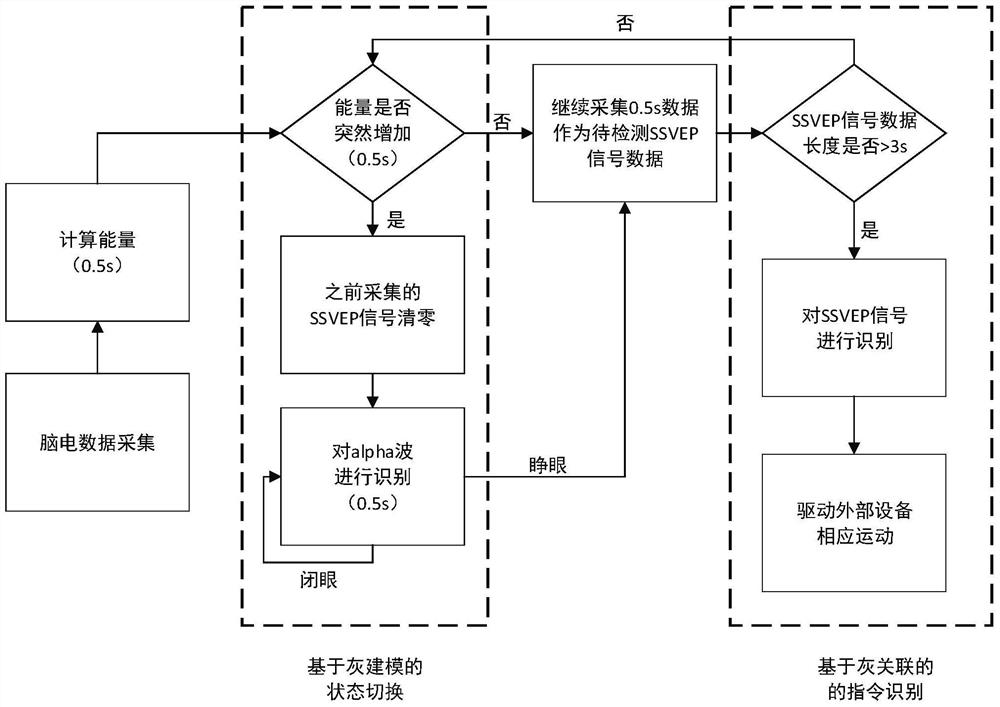A Brain-Computer Interface Method Based on Gray Theory
A technology of brain-computer interface and gray theory, applied in the field of brain-computer interface research, can solve problems such as weak signal amplitude and strong background noise
- Summary
- Abstract
- Description
- Claims
- Application Information
AI Technical Summary
Problems solved by technology
Method used
Image
Examples
Embodiment Construction
[0035] specific implementation plan
[0036] 1. Alpha wave pattern recognition based on improved gray modeling method
[0037] Processing flow such as figure 1 shown.
[0038] 1.1 First, filter the original EEG data at 4-30Hz, and set the original data length to 0.5s and 100 points.
[0039] 1.2 The filtered numerical sequence is upgraded as the original sequence of the gray model GM (1,1), that is, the non-negative sequence X (0) (k)=[X (0) (k)|k=1,2,…,n], find the accumulation sequence X (1) (k)=[X (1) (k)|k=1,2,...,n]. Here G stands for gray, M stands for model, the first 1 in brackets stands for a first-order equation, and the second 1 stands for a variable.
[0040]1.3 Introduce the smoothing coefficient u to improve the gray model, according to the cumulative sequence X (1) (k) Establish an improved GM (1, 1), build a model for every 10 points, the model is as follows:
[0041]
[0042] in, a is the development coefficient, and b is the gray action.
[004...
PUM
 Login to View More
Login to View More Abstract
Description
Claims
Application Information
 Login to View More
Login to View More - Generate Ideas
- Intellectual Property
- Life Sciences
- Materials
- Tech Scout
- Unparalleled Data Quality
- Higher Quality Content
- 60% Fewer Hallucinations
Browse by: Latest US Patents, China's latest patents, Technical Efficacy Thesaurus, Application Domain, Technology Topic, Popular Technical Reports.
© 2025 PatSnap. All rights reserved.Legal|Privacy policy|Modern Slavery Act Transparency Statement|Sitemap|About US| Contact US: help@patsnap.com



